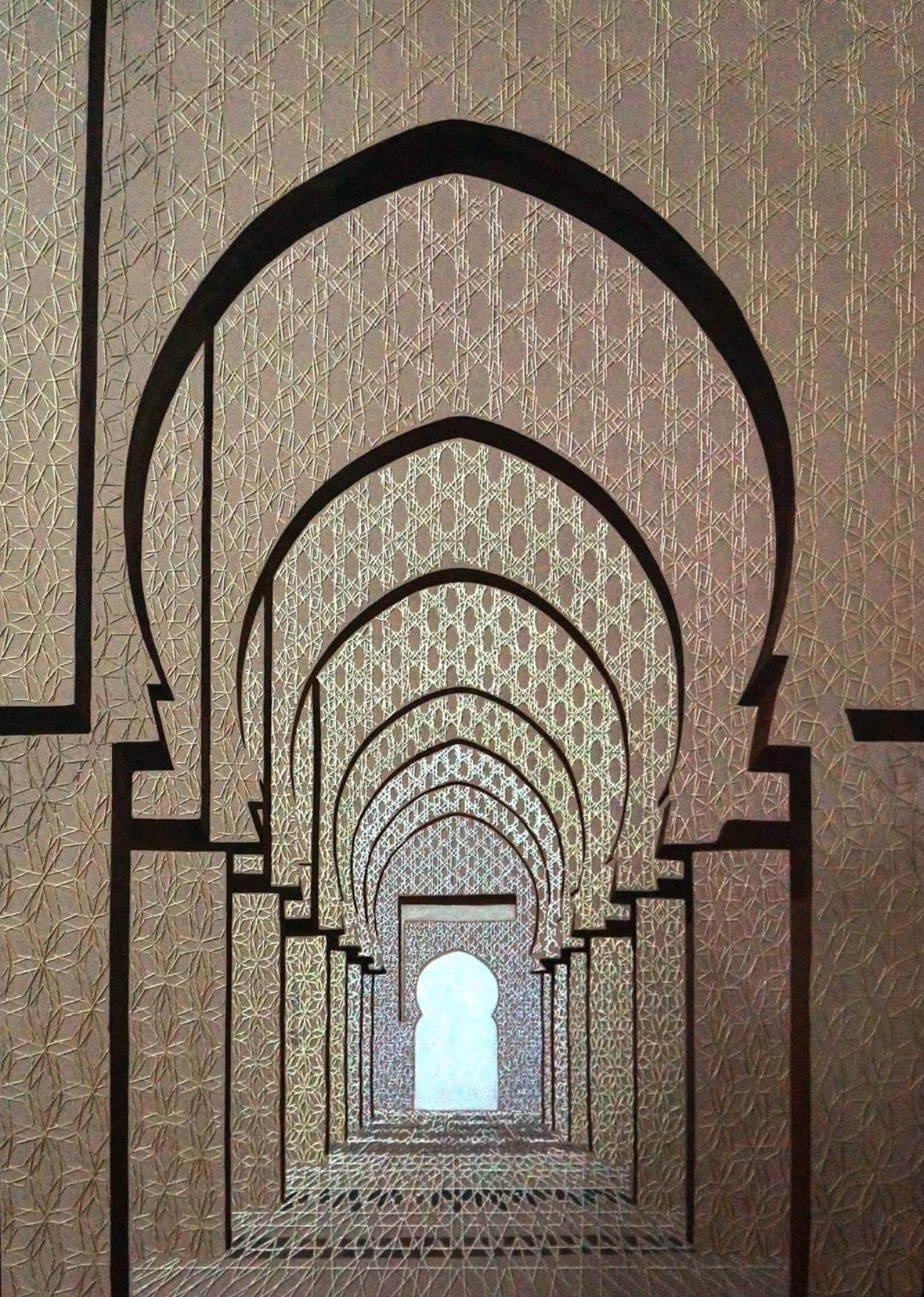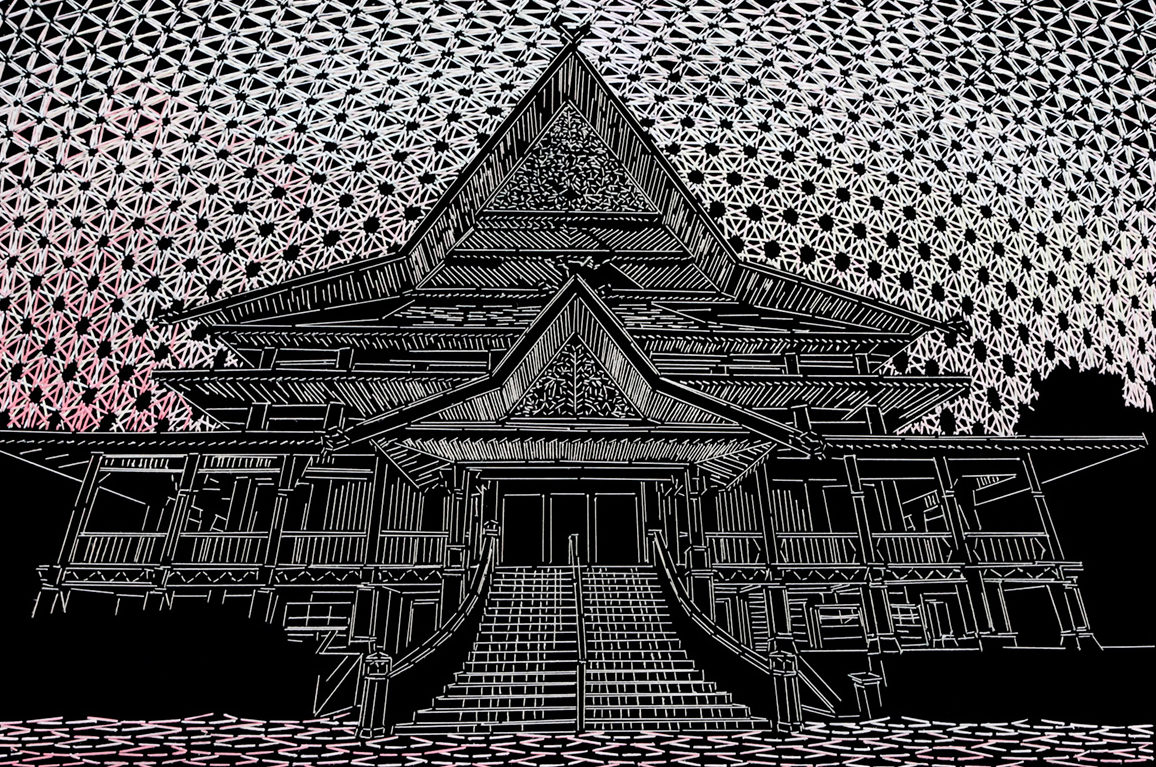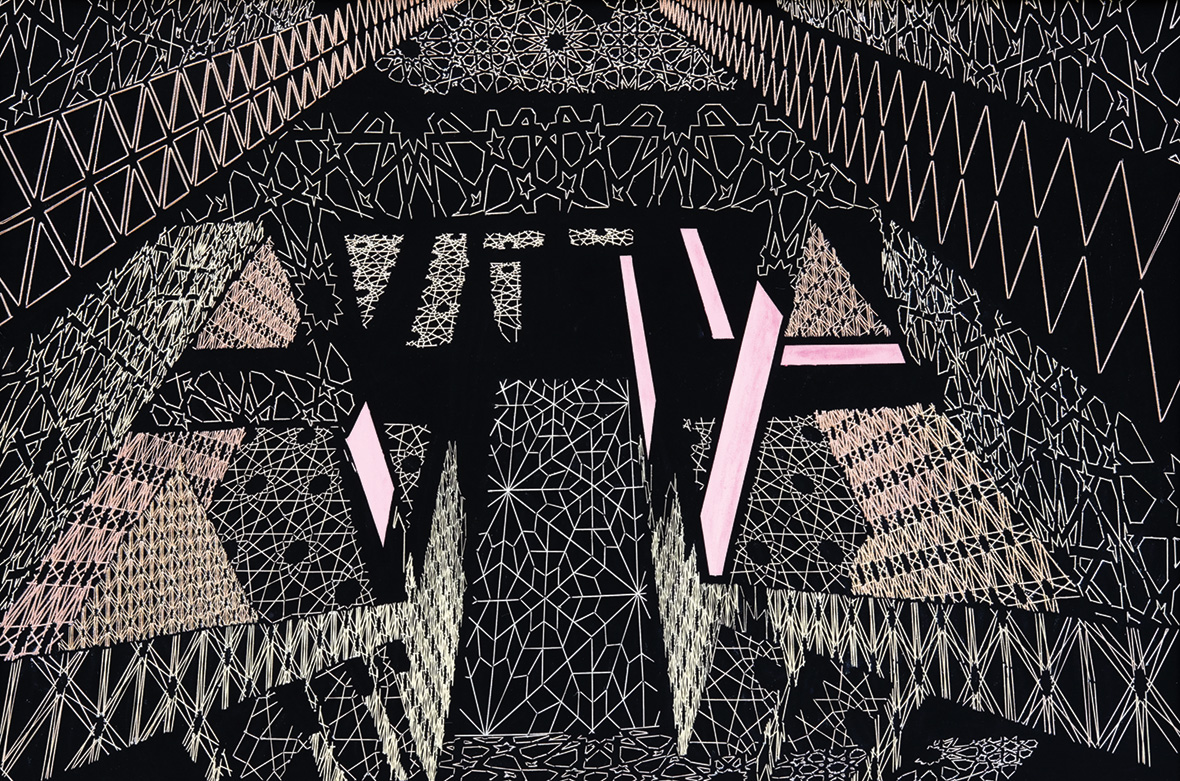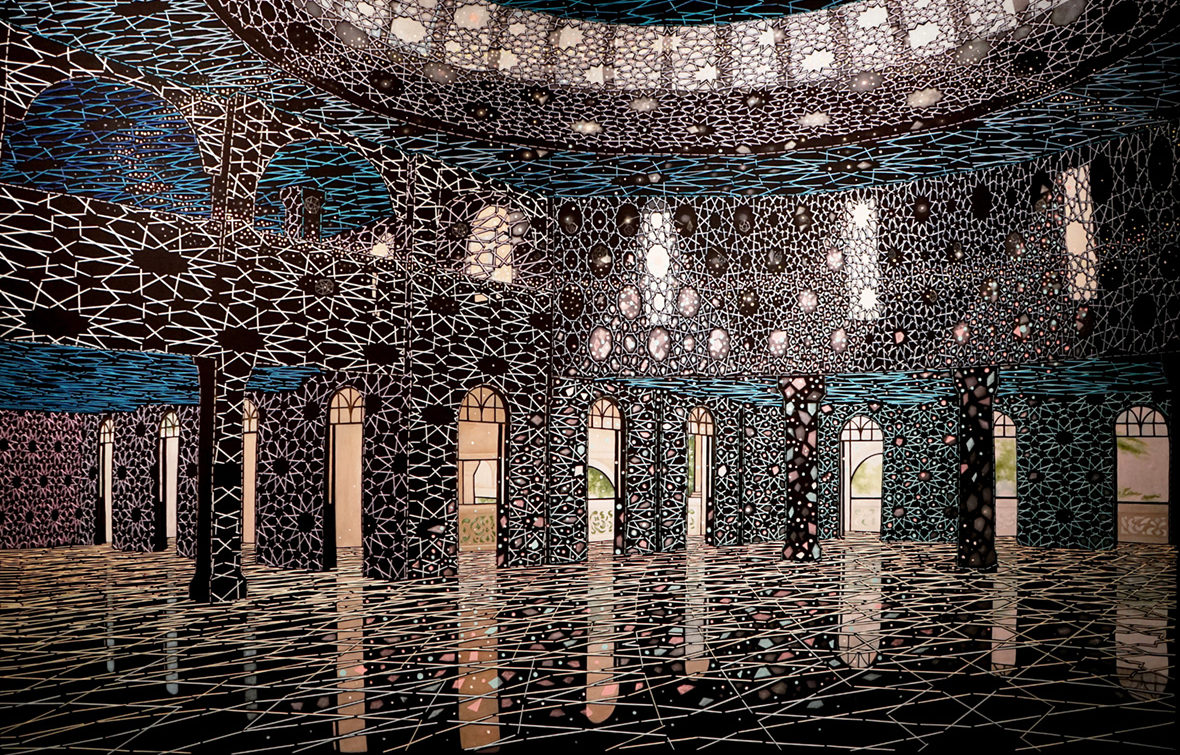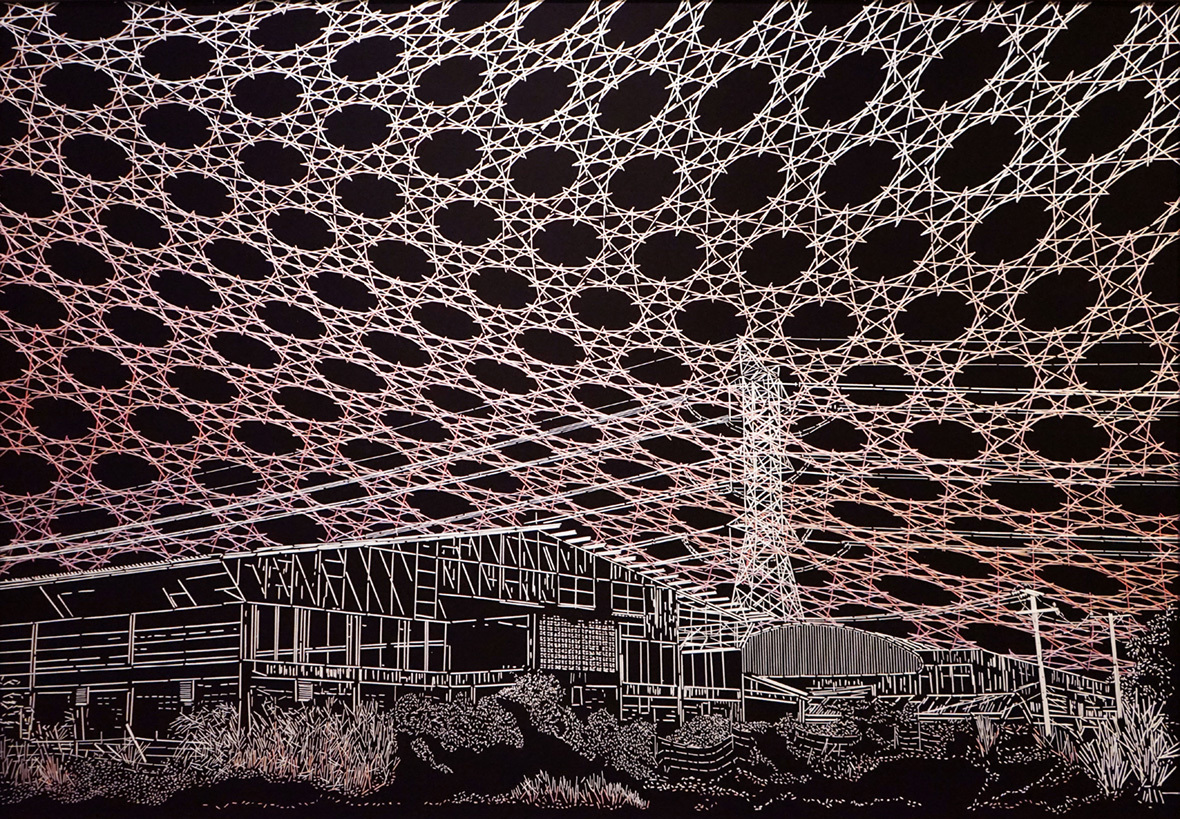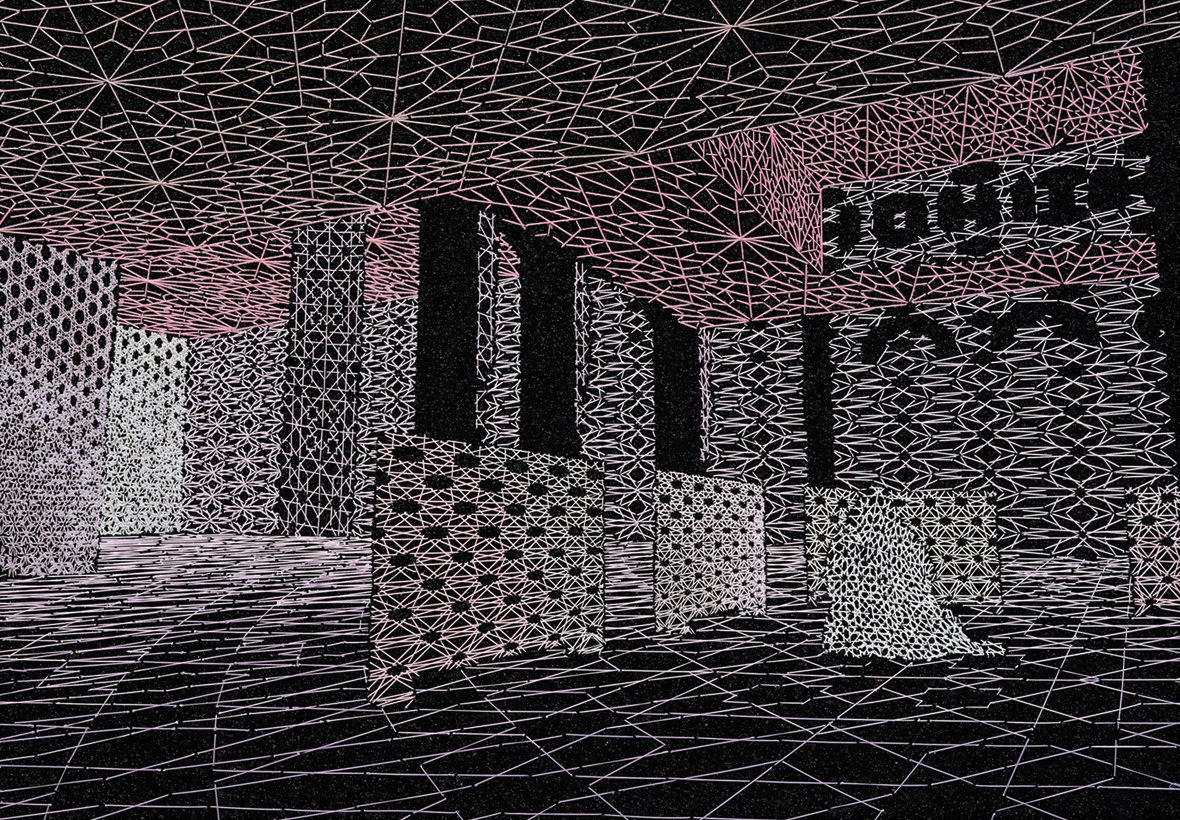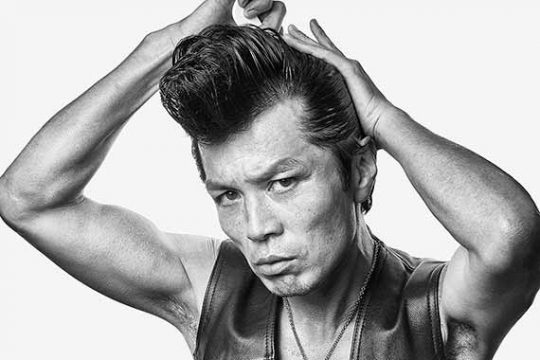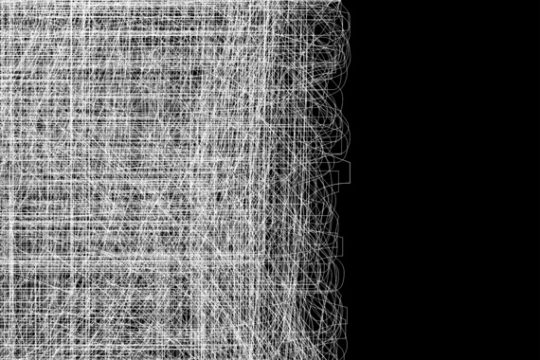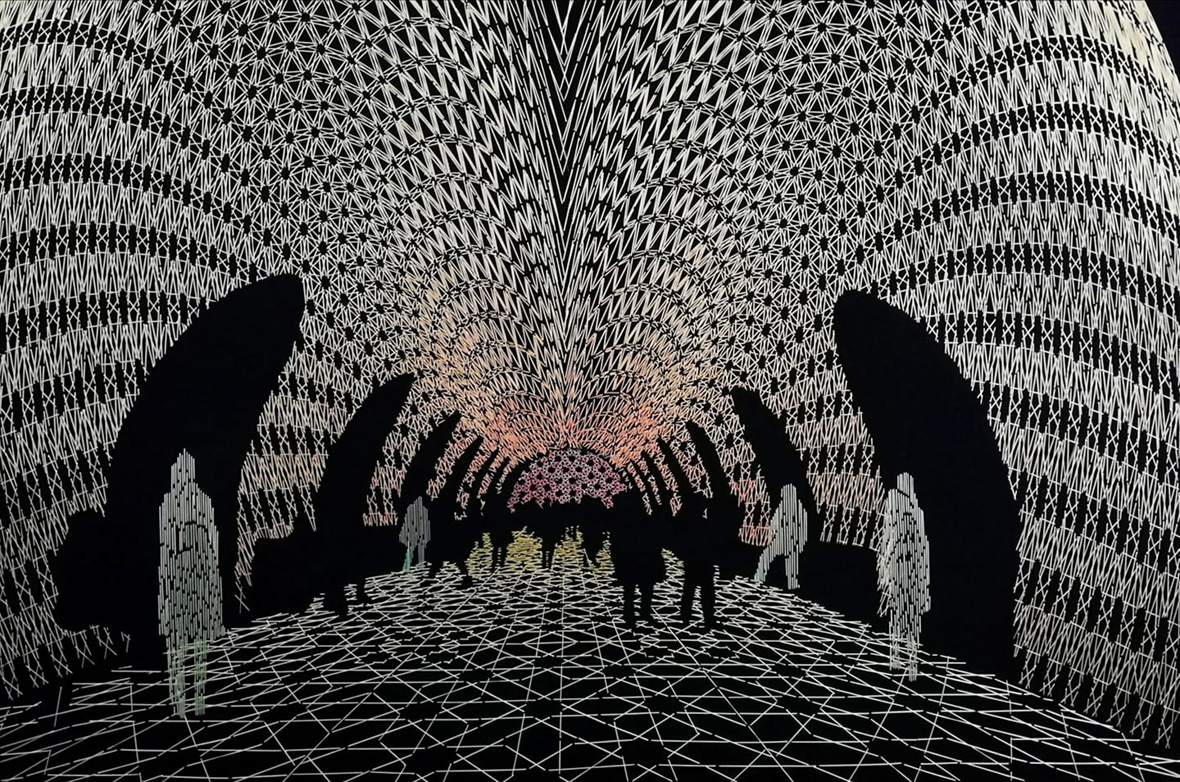
“What is art?” It’s a trite question at this point, honestly. But ask “What good can art do?” and it gets much more interesting. Mariem Thidarat Chantachua believes art can change the world, and the change she hopes to inspire is for Muslim culture to be seen in a better light. “These days Muslim people are viewed in a negative light,” the Bangkok-born and raised artist says. “You may not see many art pieces created by Muslims. But if we’re supported enough, we can contribute more.”
Although she has explicit social goals and is inspired by ancient traditions that stretch back a millennium, she doesn’t slack on aesthetics or creative ingenuity. Chantachua’s yarn-and-paint artworks are visually striking and original, a seamless blend of past and present.
“何谓艺术?”是一个老生常谈的问题,但换个问法“艺术有哪些好的方面?”就让问题变得有趣了许多。泰国艺术家 Mariem Thidarat Chantachua 相信艺术可以改变世界,她希望通过艺术,让人们以更客观和美好的眼光来看待一种宗教、或是一种文化。这位在曼谷出生和成长的艺术家表示:“现在很多人对穆斯林文化持有负面态度,他们大概也很少关注穆斯林艺术家。”
虽然 Mariem 在创作上有着明确的社会目标,也从千年历史古老文化中寻求灵感启发,但她的作品却丝毫不乏美学追求与新颖创意。她的纱线绘画(yarn-and-paint)作品极具视觉冲击力和原创性,更是过去与现在的无缝衔接。
Chantachua chooses to spotlight the beauty of religion, depicting places of worship through abstract shapes and line work based on traditional Islamic geometric patterns. In her work, patterns curve and bulge, warping in different directions as they radiate with vivid colors. Human silhouettes are rendered in matching and contrasting patterns. Interiors glow in the dark expanses of her canvases. But her art isn’t limited to religious references only: there’s a traditional Indonesian mansion, as well as more mundane spaces like old warehouses and electric towers.
Mariem 以传统伊斯兰传统图案为灵感,创作出抽象的几何空间,描绘着各种宗教场所,并以此凸显穆斯林之美。在她的作品中,几何图案深浅交替,向四面八方延伸,人体轮廓若隐若现。在漆黑的画布映衬下,线条将整个空间勾勒地明亮且通透。然而,她的视角也不仅仅局限于宗教,也有传统的印度尼西亚住宅,或生活中常见的事物,譬如旧仓库和高耸的电力铁塔等等。

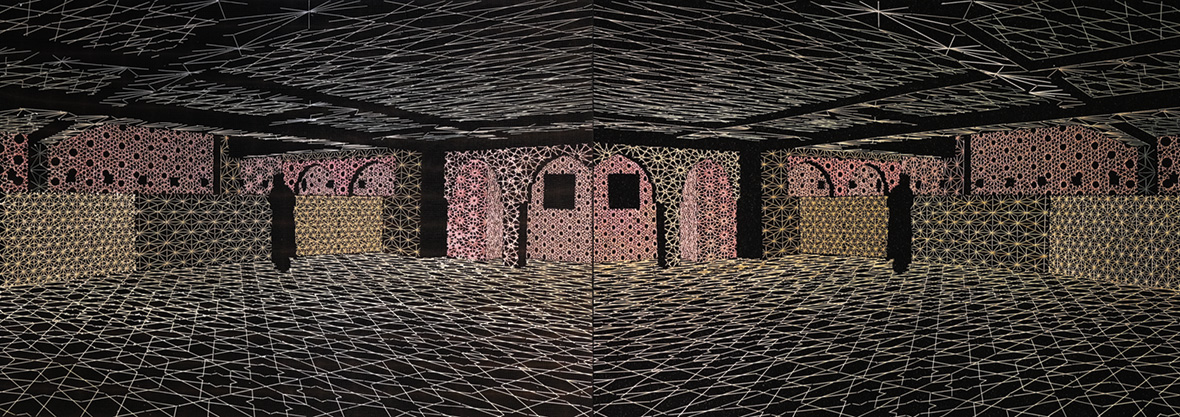
Her style is based on a type of art dating back over a thousand years. During the Islamic Golden Age beginning in the 800s, Islamic artists, mathematicians, and scientists adapted the minimal designs and patterns used by the Greeks, Romans, and Sasanians. They expanded their complexity and level of detail into an advanced form of pattern-making that’s still used today. It’s often explained that Islamic art avoids figurative depictions since they could become objects of worship. Instead, they focused on these decorative, mathematical designs.
谈到她艺术风格所受到的影响,甚至可以追溯至一千多年以前。进入 8 世纪的伊斯兰文明黄金时代,伊斯兰艺术家、数学家和科学家采用希腊人、罗马人和萨珊人的极简设计和图案,加入复杂细节,拼接并拓展成精繁复杂的规则图案,一直沿用至今。人们通常认为,伊斯兰艺术刻意避免了任何具象化的描绘,而专注于装饰性和几何化的设计,以免它们因太过具体而引发人们的盲目崇拜。
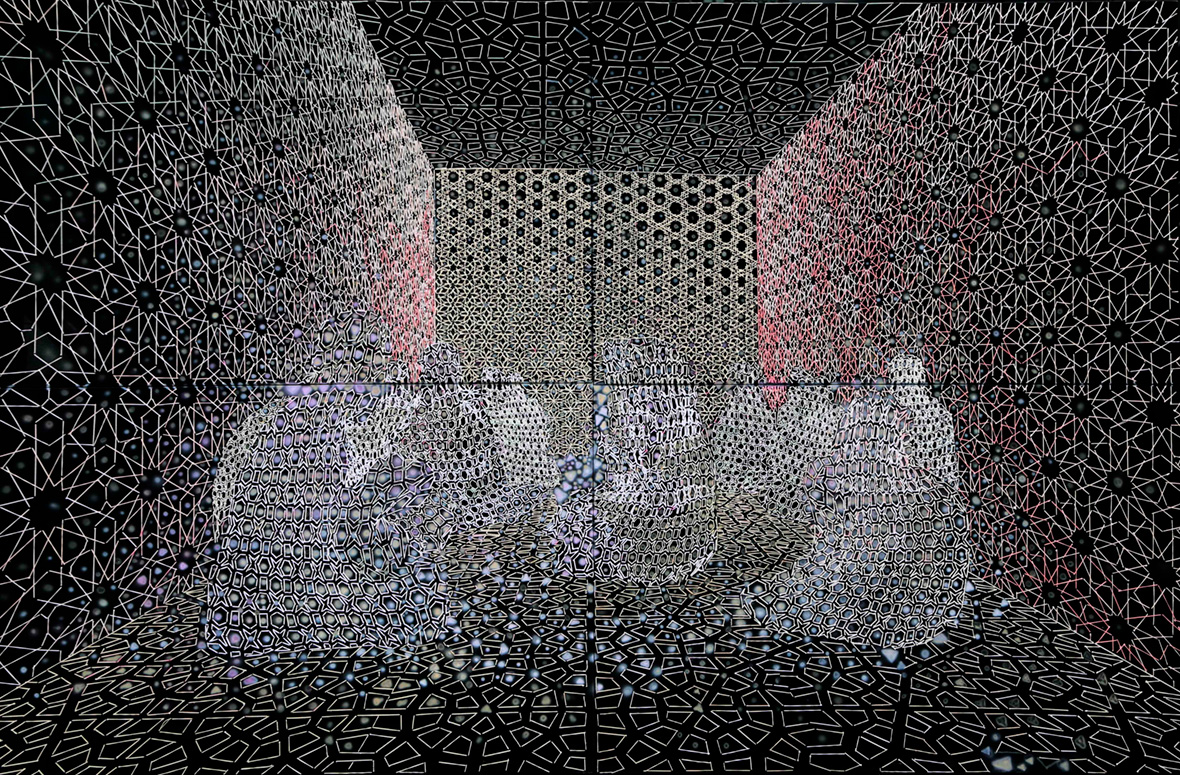
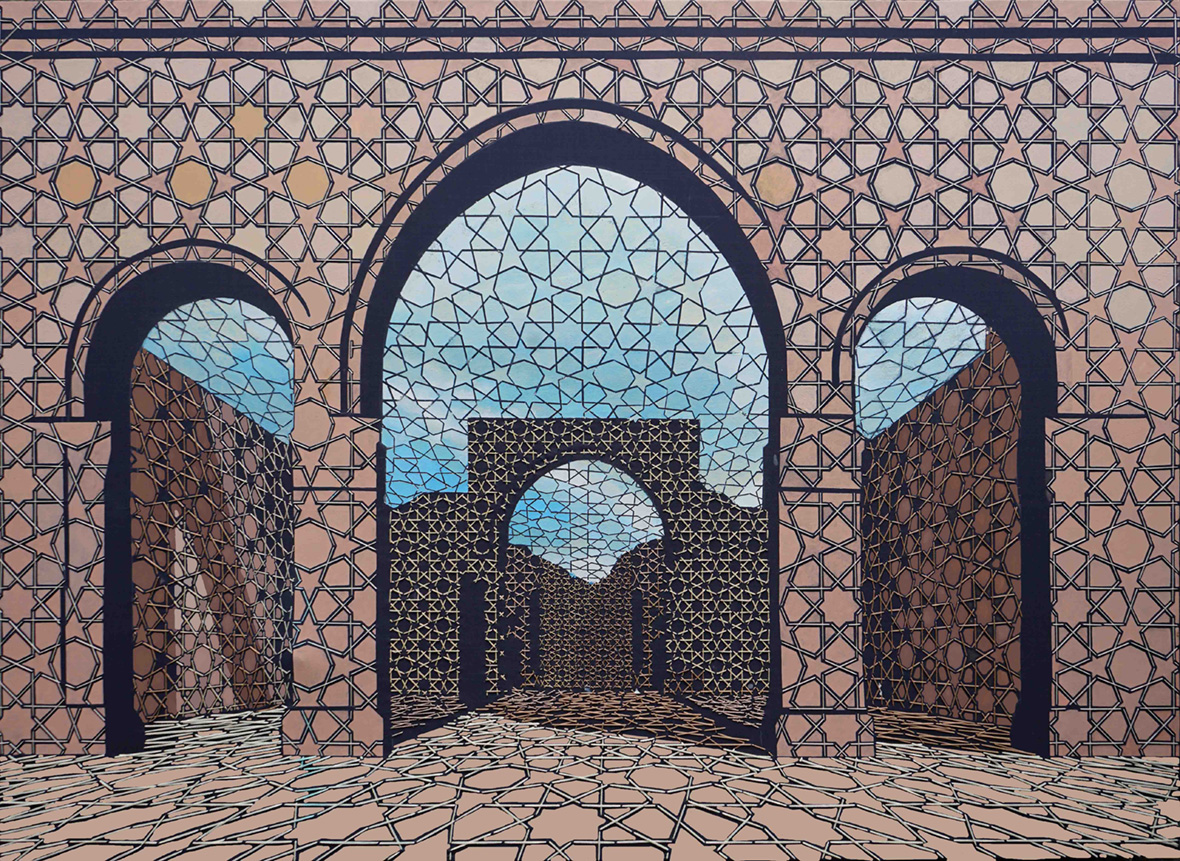
To bring these concepts into the present, Chantachua wanders around taking photos of places special to her. Since her artwork is frequently based on photographs of real-world mosques steeped in different regional traditions, people often mistake her for being from that particular area. “It makes me very interested in the complex relationship between and diversity of Muslims in each region and across different religions.” She says life as a Muslim in Bangkok has been a fairly free one, but quickly points out that she can’t speak for every Muslim in her country. “Bangkok is very cosmopolitan, it has a very hybrid culture, but most Thai Muslims live in the south, where they are the majority.” Her work celebrates this diversity but doesn’t claim authority on the topic.
为了将传统理念与当下进行结合,Mariem 四处奔走,拍摄下她眼中那些特别的建筑。她的作品通常是以真实清真寺的照片为原型进行创作,这些清真寺来自世界各地,一方面体现了不同地区伊斯兰教的共性和差异。“我对不同地区穆斯林之间的复杂关系和多样性非常感兴趣。” 作为一名生活在泰国的穆斯林,她认为自己在当地的生活是相对自由的,但世界各地伊斯兰教徒的生活却大相径庭。“曼谷是一座国际化的都市,是一个文化大熔炉,泰国大多数穆斯林生活在这座城市的南部地区。”线条之间,交织着这种多元交汇的气质,抽象的轮廓并未对任何话题妄下定论。
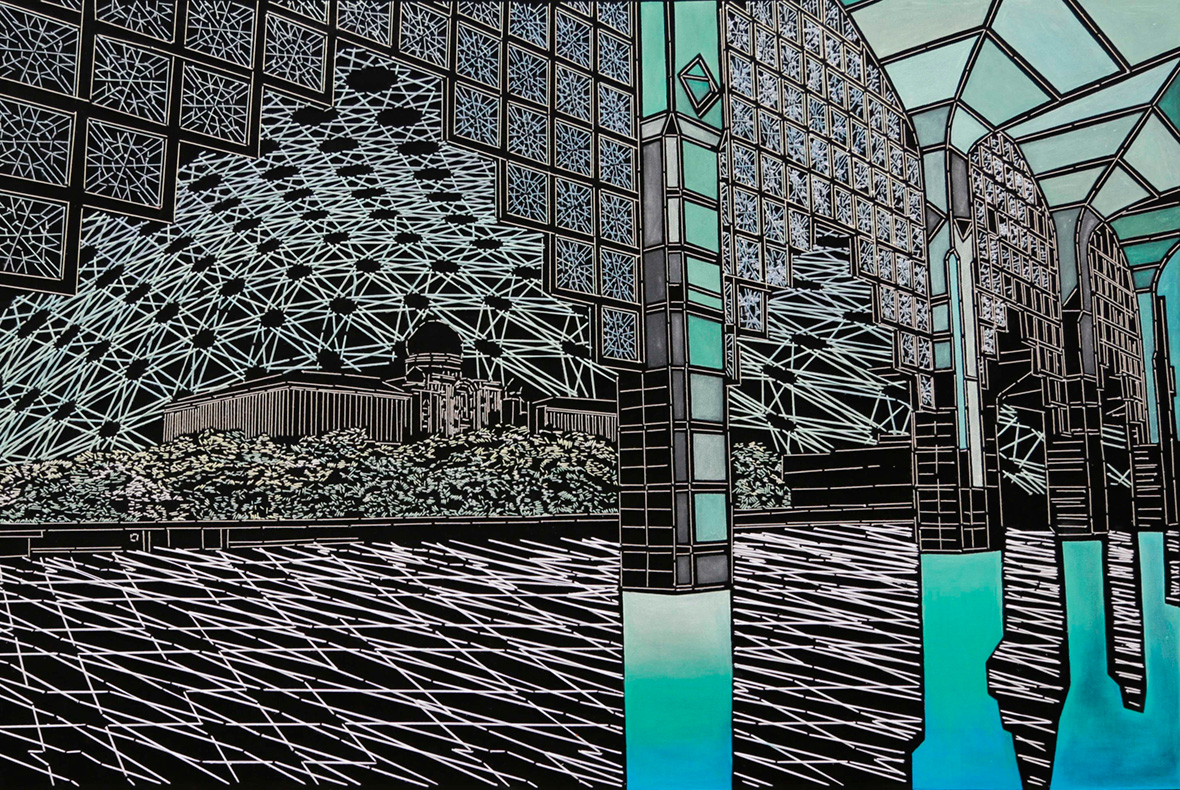
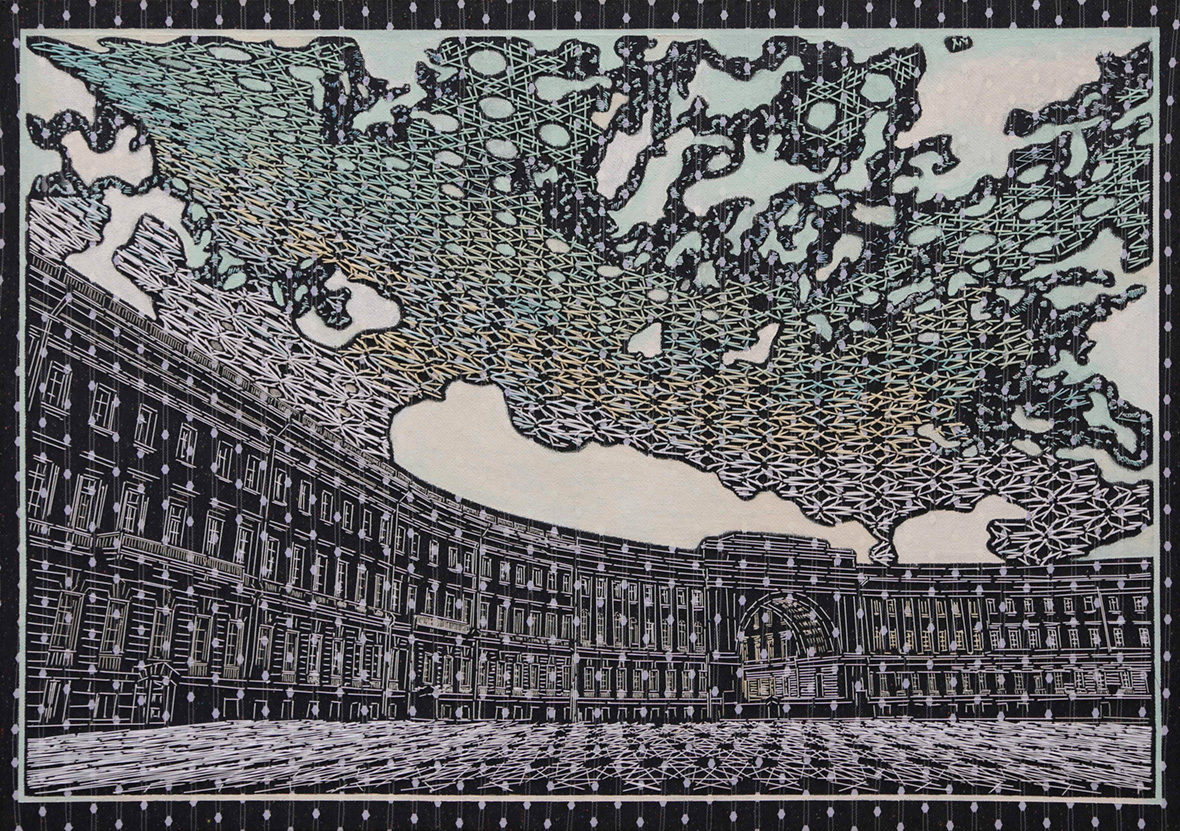
After collecting and sorting her photos, Chantachua uses the images to create a digital sketch, transferring the resulting idea to fabric stretched on a frame. Although her work resembles retro computer art (the Photoshop logo even gets a shout in one piece), Chantachua says she’s not influenced by digital art.
She adds acrylic paint to add detail and expressiveness but says that choosing the yarn takes the most work and has the most meaning. “I use different colors and sizes of yarn to create perspective and depth,” she explains, adding that the material itself is metaphoric. “Yarn is small and fragile, but when strands are woven together, they become strong and beautiful. If humans and religions could come together, unified as one, we could find that strength as well.”
在收集和整理好拍摄的照片后,Mariem 会以照片为参考,在电脑上创建草图,最后实际在画布上用纱线呈现。也许她的作品令人想到早期计算机图形设计,但 Mariem 表示自己的作品并没有受到数字艺术的影响。相比于数字艺术,纱线和丙烯颜料会呈现出更强的精细度和表现力。纱线的选择也至关重要,她解释说:“我会用不同颜色和粗细的纱线来营造透视和深度。”随后她又指出,这种材料本身是一种隐喻,“纱线纤细而脆弱,但当多根纱线交缠在一起时,就会变得强韧而美丽。如果全人类和各种宗教也能团结起来,合而为一,我们或许也能获得这样的力量。”
Like our stories? Follow us on Facebook and Instagram.
Instagram: @mariem.b.chantachua
Contributor: Mike Steyels
Chinese Translation: Olivia Li

